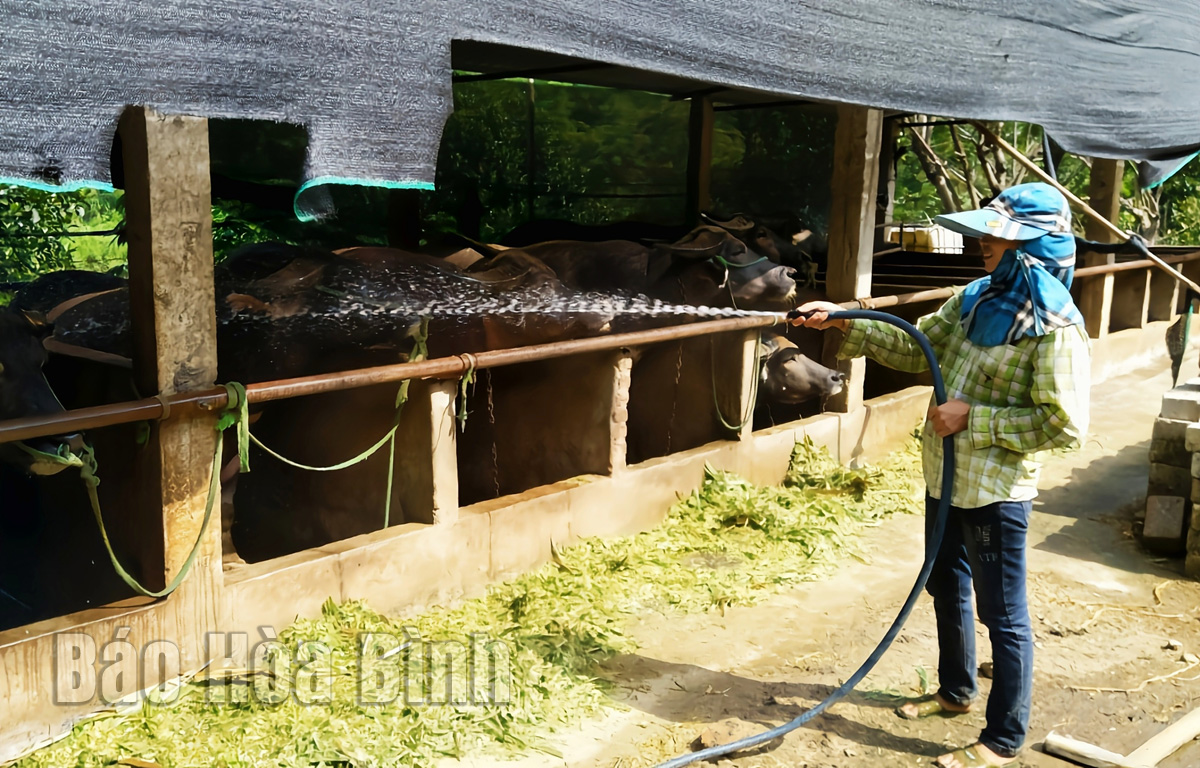
(HBO) – Developing concentrated livestock production and stepping up the application of high technology in animal husbandry are solutions for sustainable development. It is also a condition for the implementation of a scheme on developing export markets for key agricultural products of Hoa Binh province in the 2020 – 2025 period, with a vision to 2030.

Expanding large-scale concentrated production to gradually create livestock products for export. Photo taken in Thong Nhat ward (Hoa Binh city).
In a project on sustainable livestock development in Hoa Binh province in the 2020 – 2025 period, the province identifies promoting its advantages to raise some key species as an important goal. It will develop a variety of livestock species not only to meet the needs of domestic consumption, but also for export.
To achieve these goals, over the past years, the province has implemented many solutions, including reviewing and planning concentrated livestock farming; increasing the productivity, quality and added value with advantages of each locality associated with restructuring the agricultural sector and husbandry planning and new-style rural building planning of the province.
Hoa Binh has also promoted the application of science and technology in livestock breeding, encouraged enterprises to invest in animal husbandry, and built regions and establishments which can ensure disease safety and veterinary hygiene.
Lac Thuy is one of the province’s localities boasting a thriving animal husbandry with many outstanding products. According to a report of the district People's Committee, in order to develop livestock production towards export, the district has focused on large-scale and concentrated farming, promoted product sale linkages, and provided support in terms of science and technology. Goat farming is receiving more attention because of its high economic value and suitable development conditions. The district is also raising over 12,600 honey bee colonies, and developing the herds of dairy and beef cows, with seven farms and 400 heads./.
According to data from the Hoa Binh Provincial Party Committee, the industrial production index for the first six months of 2025 is estimated to have increased by 20% compared to the same period last year. This marks the highest year-on-year growth rate for this period since 2020.
In the first six months of 2025, Hoa Binh province’s export turnover was estimated at 1.145 billion USD, marking an 18.11% increase compared to the same period in 2024. Import turnover was estimated at $ 804 million, a 17.15% increase, which helped the province maintain a positive trade balance.
The lives of the ethnic minority farmers in Tan Lac district have gradually improved thanks to the new directions in agricultural production. This is a testament to the collective strength fostered through the professional associations and groups implemented by various levels of the district’s Farmers’ Union.
With the motto the "product quality comes first,” after nearly one year of establishment and operation, Muong village’s Clean Food Agricultural and Commercial Cooperative, located in Cau Hamlet, Hung Son Commune (Kim Boi district), has launched reputable, high-quality agricultural products to the market that are well-received by consumers. The products such as Muong village’s pork sausage, salt-cured chicken, and salt-cured pork hocks have gradually carved out a place in the market and they are on the path to obtaining the OCOP certification.
In the past, the phrase "bumper harvest, rock-bottom prices" was a familiar refrain for Vietnamese farmers engaged in fragmented, small-scale agriculture. But today, a new spirit is emerging across rural areas of Hoa Binh province - one of collaboration, organisation, and collective economic models that provide a stable foundation for production.
Maintaining growing area codes and packing facility codes in accordance with regulations is a mandatory requirement for agricultural products to be eligible for export. Recently, the Department of Agriculture and Environment of Hoa Binh province has intensified technical supervision of designated farming areas and packing facilities to safeguard the "green passport" that enables its products to access international markets.



